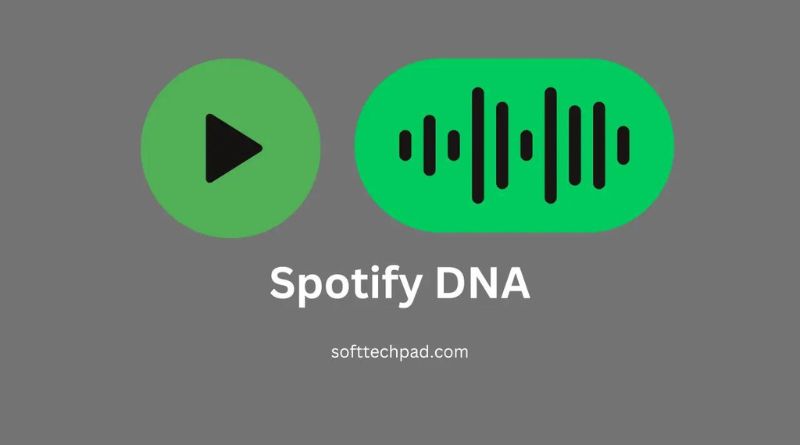In an age where music streaming has revolutionized how we consume music, Spotify has emerged as a leader in the industry. One of its unique features is the concept of “Spotify DNA,” which encapsulates the personal musical identity of each user based on their listening habits and preferences. This article explores what Spotify DNA is, how it works, and the implications it has for users and the music industry.
Table of Contents
What is Spotify DNA?
Spotify DNA is a term used to describe the personalized algorithmic system that analyzes a user’s listening habits to create a unique musical profile. It reflects a user’s tastes, preferences, and even the emotional responses to the music they listen to. By analyzing various metrics, including song preferences, genre affinity, and listening frequency, Spotify DNA provides users with personalized playlists, recommendations, and insights into their musical identity.
Key Components of Spotify DNA
- Listening Habits: Spotify tracks the songs you listen to, how often you play them, and even the time of day you listen. This data helps Spotify understand your musical preferences better.
- Playlists and Recommendations: Based on your listening habits, Spotify curates personalized playlists like “Discover Weekly” and “Release Radar.” These playlists introduce users to new songs and artists tailored to their tastes.
- Mood and Genre Analysis: Spotify DNA assesses the genres you gravitate towards and the moods associated with the songs you prefer. This allows the platform to provide recommendations that resonate with your emotional state.
- Social Features: Users can also see what their friends are listening to and share their musical discoveries, further enriching the community experience and enhancing the personalization of their music profile.
How Does Spotify DNA Work?
Spotify DNA operates through a combination of data analytics, machine learning algorithms, and user feedback. Here’s a breakdown of the process:
- Data Collection: Spotify collects data from users’ listening history, including the duration of songs played, the frequency of specific genres, and skips.
- Algorithmic Analysis: Advanced algorithms analyze the collected data to identify patterns in user behavior. These algorithms take into account millions of data points to deliver precise recommendations.
- Feedback Loop: Spotify continually updates its recommendations based on user interactions. If a user skips a song or plays a track multiple times, the algorithms adjust accordingly to refine future suggestions.
- User Engagement: Users are encouraged to interact with the platform, such as liking or saving songs, which further informs their Spotify DNA. This engagement helps Spotify create an evolving musical identity for each user.
The Benefits of Spotify DNA
1. Personalized Experience
Spotify DNA ensures that users receive a highly personalized experience. Instead of sifting through thousands of tracks, users get recommendations that resonate with their individual tastes, making music discovery effortless and enjoyable.
2. Enhanced Music Discovery
With features like “Discover Weekly” and curated playlists, users can easily discover new artists and songs that align with their preferences. This not only benefits listeners but also helps emerging artists gain exposure.
3. Understanding Musical Identity
Spotify DNA helps users understand their musical identity better. By analyzing their listening habits, users can identify genres they enjoy, tracks that evoke specific emotions, and even revisit past favorites.
4. Social Connections
The ability to see what friends are listening to and share playlists creates a sense of community among users. It encourages discussions about music and fosters connections based on shared tastes.
FAQs About Spotify DNA
1. What exactly is Spotify DNA?
Spotify DNA refers to the personalized musical profile created by Spotify based on a user’s listening habits, preferences, and interactions with the platform.
2. How does Spotify collect data for DNA?
Spotify collects data through user listening history, including song plays, skips, likes, and playlists created.
3. What are the benefits of having a Spotify DNA?
The benefits include a personalized listening experience, enhanced music discovery, understanding your musical identity, and social connections with friends.
4. Can I reset my Spotify DNA?
While you cannot entirely reset your Spotify DNA, you can influence it by changing your listening habits and interacting differently with the platform.
5. How does Spotify ensure privacy with my data?
Spotify has robust privacy policies in place to protect user data. Users can manage their privacy settings and opt out of data sharing if they choose.
6. Do all users have a unique Spotify DNA?
Yes, each user has a unique Spotify DNA that reflects their individual listening habits and musical preferences.
7. What is the difference between Spotify DNA and regular playlists?
While regular playlists are curated lists of songs, Spotify DNA provides a dynamic and personalized understanding of a user’s musical identity, influencing recommendations and curated content.
8. Can Spotify DNA help me find new genres?
Yes, Spotify DNA analyzes your listening patterns and can introduce you to new genres that align with your musical tastes.
Conclusion
Spotify DNA is a powerful feature that enhances the user experience by personalizing music discovery and understanding individual musical identities. Through advanced data analytics and machine learning, Spotify creates tailored playlists and recommendations that reflect each user’s unique tastes. As music streaming continues to evolve, Spotify’s approach to personalizing the listening experience stands out as a testament to how technology can deepen our connection to music. Whether you’re a casual listener or a die-hard music fan, Spotify DNA helps you discover and enjoy the music that resonates with you the most.
